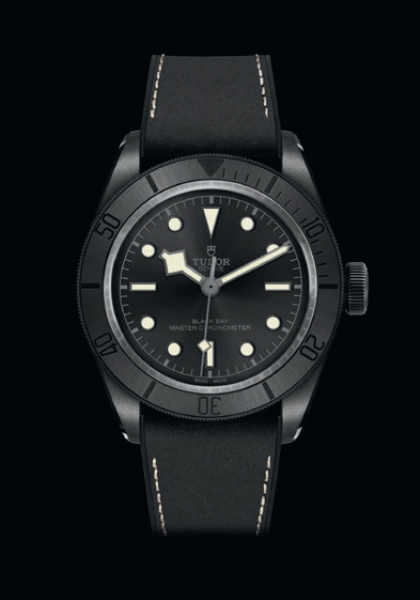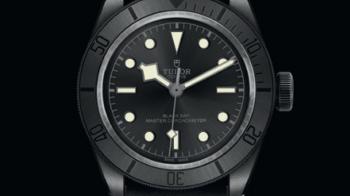Registered and trademarked as “The Tudor” in 1926, Tudor was the brainchild of Rolex founder Hans Wilsdorf, whose wish was to offer Rolex quality at more affordable prices. It wasn’t really until after World War II, in March 1946, that Montres Tudor S.A. was officially created. Essentially, Rolex would reinforce the fact that Tudor watches upheld a particular level of technical performance and aesthetic qualities and would handle distribution. Early on in its lifespan, the brand began forging a long and rich history when it comes to dive watches. In 1948, Tudor was producing the Oyster 4463 watch that measured 34mm in diameter and boasted a waterproof case, a patented Oyster-type crown as well as luminous hands and markers. The mechanical movement, Calibre 59, was fitted with an anti-shock system. Then, in 1952, the Oyster Prince launched, with ads touting strength and precision for people who worked in extreme conditions. It also boasted the waterproof Oyster case and self-winding Perpetual rotor mechanism. It had all the makings of the perfect dive watch — except it got its start that same year as an explorer’s watch when 26 versions joined the British scientific expedition to Greenland that was organized by the Royal Navy.
Over the ensuing years, a variety of Tudor Oyster watches emerged, including an alarm. It was in 1954, though, that the brand embarked on what was to become its dive watch legend. The first divers’ watch, the Tudor Oyster Prince Submariner Reference 7922 — water-resistant to 100 metres — was unveiled to the world that year, with numerous variations following suit, including the Reference 7924 in 1958 that was water-resistant to 200 metres.
Ongoing changes and updates were made in the 1960s to further the aesthetic and ergonomic appeal of the watch, as well as to enhance water resistance and durability. Crown guards changed, bezel and dial graduations were altered, and so on and so forth until the late 1960s release of the Tudor Oyster Submariner 7900 series that would set the standards for another 30 years — with some changes in movements, of course.

A plethora of awards
As the brand was working on its dive watches, it was also becoming deeply involved with professional diving organizations and military, including the Marine Nationale Française and the US Navy, which used Tudor Submariners as equipment for their elite squads. Throughout the past decades, Tudor has enjoyed a win/win partnership with the French Navy, as it has continued to develop its dive watches.
Today, Tudor continues to be one of the most sought-after dive watches, particularly with its Black Bay series. The watches in this line are water-resistant to 200 metres and boast cases made of high-tech ceramic, surgical grade stainless stee and even bronze. The dials on these dive watches are inspired by 1950s watches, but house state-of-the-art movements. They offer everything a diver could want in a watch that is going to the depths of the seas with him or her.
In fact, Tudor’s Black Bay dive watch in bronze won the Grand Prix D’Horlogerie de Genève (GPHG) in 2013. Considered by many as the Academy Awards of the watch industry, the GPHG judges deemed the Heritage Black Bay Bronze dive watch the winner of its “Revival” prize that year, as it was a reinterpretation of the iconic 1954 watch. Different versions of the Black Bay then went on to win additional GPHG prizes over the ensuring years, including the Tudor Black Bay Fifty-Eight Navy Blue that won the Challenge prize in 2020 and the Black Bay Ceramic that won the “Petite Aiguille” prize in 2021.
The Black Bay Ceramic is in fact a prized diver’s watch coveted by collectors. Thanks to the high-tech ceramic case with a matte finish and a Manufacture calibre, the watch screams both form and function. It boasts Master Chronometer certification from METAS and the Official Swiss Chronometer Testing Institute, COSC. Tested for precision at two temperatures in six positions at full power reserve and at 33 percent power reserve, the Black Bay Ceramic passes with flying colours.
Water-resistant to 200 metres, the 41mm matte black-cassed Black Bay Ceramic is also antimagnetic to 15,000 gauss. Powered by the Manufacture MT5602-1U calibre with a 70-hour power reserve and a silicon hairspring, the watch displays the hours, minutes and seconds. It complies with the ISO standard 22810:2010 for dive watches. The self-winding movement is visible via the transparent sapphire caseback.
This year GMT Magazine and WorldTempus have embarked on the ambitious project of summarising the divers watch since 2000 in The Millennium Watch Book - Divers watch, a big, beautifully laid out coffee table book. This article is an extract. The Millennium Watch Book - Divers watch is available in both French and English here:






